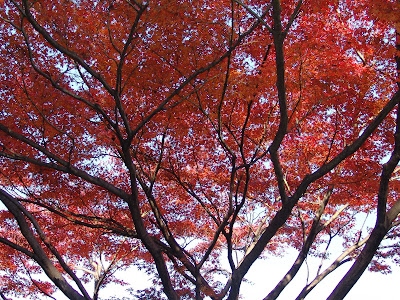That answer depends on your tolerance of the weather.
I don't tolerate the heat too well so personally I could think of nothing worse than travelling around in summer in 30 degrees with high humidity levels.
I have two favourite times for travelling through Japan.
The first is winter. The sky is a perfect blue, the sun warms you up just enough and I'm yet to experience rain! I love the cold crisp air cooling me as I explore castles, temples, gardens and more. Yes it can get pretty cold, but so long as you have good quality walking shoes, woolen socks, durable pants (jeans), woolen jumpers and jackets then you will be fine. Winter in Tokyo is not that cold. I have never been freezing and the average temperature I have experienced during the day would be around 8-12 degrees. When you get to places such as Takayama, Kanazawa or Nakanojo, then a beanie, scarf and gloves will be required! But it is still blue skies in these places (when its not snowing) which makes all the difference in the world. I also think its more fun rugging up against the cold of winter than sweating it out in summer!
| Me in Kanazawa in winter where a beanie, scarf and gloves are required! |
My other favourite time to travel is spring which of course is Cherry Blossom season. Apart from the obvious beauty the Cherry Blossoms bring to this time of year, the weather is also fantastic for travelling. The days are cool, but are starting to warm up to where a thin jumper is all that is required during the day. The mornings and evenings can still be quite crisp, but with all the walking around that gets done looking at the cherry blossoms, you warm up pretty quickly.
| Spring time in Japan! Cherry blossoms, blue skies and picnics! |
Autumn is also a great time to travel through Japan, much like Spring, where the weather is cool, but sunny. The highlight of Autumn is the stunning colour changes of the trees. The colours range from bright yellow through orange to deep red.
 |
| Autumn brings beautiful deep red leaves. |
Japan has distinct seasons with features for each one which are all spectacular in their own right.
I love Japan at any time of the year but spring and winter are a lot of fun.
When is your favourite time to travel and why?
G




















































